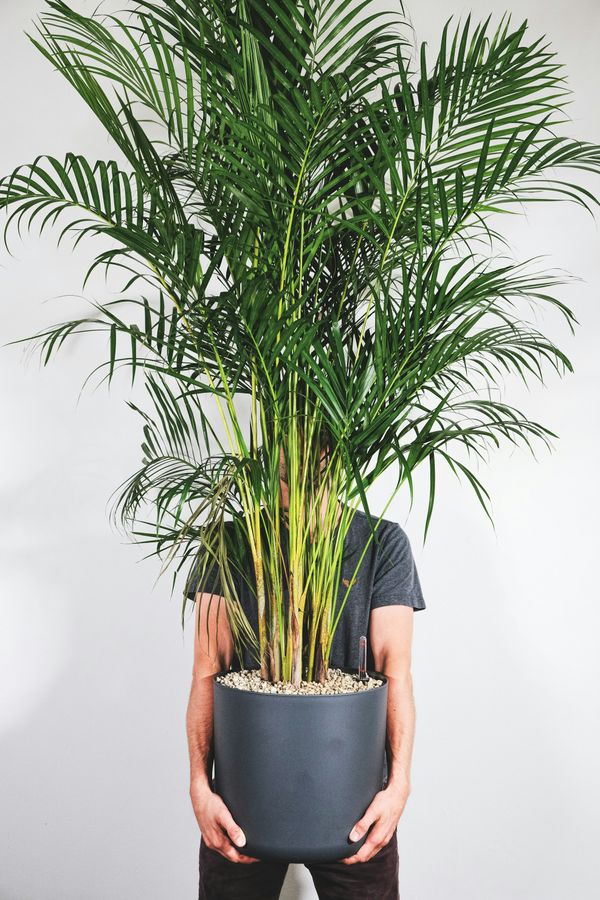Areca Palm Care Guide
How to grow and care for Areca Palm (Dypsis lutescens)
The Dypsis lutescens, commonly known as the Areca Palm, is a popular indoor plant cherished for its elegant feathery fronds and air-purifying qualities. Originating from Madagascar, the Areca Palm is perfect for adding a tropical touch to your home environment. It's easy to care for and can thrive indoors with the right attention. Let’s explore how you can keep your Areca Palm healthy and flourishing.

Disclosure: This content includes affiliate links, which means we may earn a commission if you click on a link and make a purchase. As an Amazon Associate, we earn from qualifying purchases. This comes at no extra cost to you and helps offset the cost of running Leafwise. Please read our disclaimer for more info.
Table of Contents
Care
Light
Areca Palms thrive in bright, indirect light but can tolerate lower light conditions. Avoid direct sunlight, as it can scorch the leaves. If natural light is insufficient, consider using a grow light to supplement.
Temperature & Humidity
Maintain a temperature range of 65-80°F (18-27°C), avoiding drafts or sudden temperature changes. Areca Palms prefer moderate to high humidity levels. If the air is too dry, use a humidifier, a pebble tray, or mist the leaves occasionally to maintain moisture levels.
Watering
Water when the top inch of soil is dry. Overwatering can cause root rot, while underwatering may lead to browning leaf tips. Use filtered or distilled water to prevent mineral buildup, which can damage the leaves. Reduce watering frequency in the fall and winter when growth slows.
Soil
Use a well-draining potting mix, preferably one formulated for palms or tropical plants. A mix containing peat moss, perlite, and sand will help maintain proper drainage and aeration, preventing root rot.
Fertilization
Feed the Areca Palm once a month during the growing season (spring and summer) with a diluted liquid houseplant fertilizer. Avoid over-fertilizing, as it can lead to salt buildup in the soil. No fertilization is needed in fall and winter when the plant's growth naturally slows.
Maintenance
Pruning
Regularly remove yellow or brown fronds to encourage healthy growth. Use clean, sharp scissors to trim at the base of the stem. Avoid excessive pruning, as it may stress the plant and hinder new growth.
Cleaning
Dust can accumulate on the leaves, reducing their ability to absorb light. Wipe the leaves gently with a damp cloth or rinse them under lukewarm water occasionally. Avoid using leaf shine products, as they can clog the plant’s pores and impede respiration.
Repotting
Areca Palms grow relatively slowly and require repotting every 2-3 years. Choose a pot one size larger with drainage holes, and refresh the potting mix. If the plant becomes root-bound, repotting will encourage healthier growth and prevent nutrient deficiencies.
Propagation
Areca Palms are best propagated through division, which is the most effective method for producing healthy new plants:
- Remove the plant from its pot carefully.
- Gently separate clusters of roots and stems, ensuring each section has healthy roots.
- Replant each section into its own pot with fresh, well-draining potting mix.
- Water sparingly until new growth establishes, keeping the soil slightly moist but not soggy.
Common Issues
Pests
Common pests: Spider mites, mealybugs, and aphids.
- Symptoms: Yellowing leaves, sticky residue, or webbing.
- Solution: Treat with insecticidal soap or neem oil, ensuring thorough coverage of affected areas. Increase humidity slightly to deter spider mites.
Root Rot
- Symptoms: Mushy roots, wilting leaves, or a foul smell.
- Solution: Improve drainage, reduce watering frequency, and trim any affected roots before repotting in fresh soil. Avoid letting water sit in the plant’s saucer.
Yellowing Leaves
- Cause: Overwatering, insufficient light, or nutrient deficiency.
- Solution: Adjust your watering schedule, provide adequate indirect light, and fertilize during the growing season if needed. Trim yellowed leaves to maintain the plant’s appearance.
Brown Tips
- Cause: Low humidity, excessive sunlight, or over-fertilization.
- Solution: Increase humidity, move the plant away from direct sunlight, and adjust your fertilization routine.
By following these care guidelines, your Areca Palm (Dypsis lutescens) will thrive, bringing a lush, tropical aesthetic to your indoor space.
